Imitation of art?: Elmgreen & Dragset at Victoria Miro
The artists Michael Elmgreen and Ingar Dragset are best known for grand-scale immersive installations tackling big issues. In End Station they built a fake New York subway station, an entire social housing block for Celebrity – The One and Many, the homes of an art collector and an architect in serious decline, and perhaps most famously, a fake Prada store in the Texas desert. The sublime is not their concern. Neither, on the whole, do they do minimal or personal. ‘Self-Portraits’, the duo’s new show at Victoria Miro’s Mayfair branch, is both. And it’s ever so simple.

The artists Michael Elmgreen and Ingar Dragset are best known for grand-scale immersive installations tackling big issues. In End Station they built a fake New York subway station, an entire social housing block for Celebrity – The One and Many, the homes of an art collector and an architect in serious decline, and perhaps most famously, a fake Prada store in the Texas desert. The sublime is not their concern. Neither, on the whole, do they do minimal or personal. ‘Self-Portraits’, the duo’s new show at Victoria Miro’s Mayfair branch, is both. And it’s ever so simple.
Essentially, the pair track a life – two lives – in art through sometimes blown up, sometimes not, museum wall labels. Revelatory moments, career-changing or emotional insights, identify-forming identifications and psychic blows – we suppose, but can only suppose – are here.
Works by David Hockney, Ross Bleckner, Roni Horn, Martin Kippenberger, Keith Haring and Nicole Eisenman are namechecked. (Ingar told us once that he had visited the Rothko chapel in search of the sublime, of the transcendental, the transfigurative even, as many artists and other do, and came away unmoved. So there is no namecheck for him.)
There are no reproductions of the actual art here. Instead the labels take on the shape and form and material quality of art; they are made in marble, they are paint on canvas and metal, charcoal on paper. The pair are famously sceptical about the traditional gallery space as a place to experience art; the ways it gives an authority and reverence indiscriminately (though you must presume discrimination somewhere).
They like their art to work harder, to command and create interest outside the temple. Or to create a total space within the temple. ‘Self-Portraits’, then, is perhaps another sly dig at the system; the explanatory tag becomes the art because we only know anything as ‘art’ because the tag tells us it is. The tag marks out art, the tag becomes art. (In the past, they have spent 12 hours painting a White Cube gallery space even whiter. In another exhibition, they mounted the actual recovered wall surface of various museums on canvas. ‘Self-Portraits’ can be seen as part of a continuing series.)
'Self-Portraits',' they explain, 'is reminiscent of our early projects in which we analysed the very format and process of exhibiting by using the seemingly insignificant components common in museum or gallery displays. We’ve turned these into something that suddenly gains a different meaning, that becomes the main focus – in this case, the small wall label, which is normally just there to inform you about the corresponding work.'
But there is more here than that. The pair are also curiously, pleasingly old-fashioned in their predilection for narrative – and this is, in part, their story. This is a self-portrait. It also questions how much our identity is built from these markers.
'The exhibition shows what we, Ingar and Michael, share,' says the duo. 'In a rather unfiltered way, it tells about our inspirational sources. The titles on these label paintings and engraved marble reliefs all refer to events and situations in our own personal lives, or to important dialogues between us, since our collaboration is based on our dialogues.'
It might also be a glorious celebration of art. It might suggest that you can better, truly understand someone if you know what has moved them, what meant something at a particular time. And even more than that, that we are bent into shape by those moments. It might. It is always hard to tell.
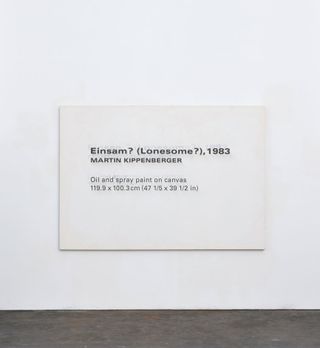
Essentially, the pair track a life – two lives – in art through sometimes blown up, sometimes not, museum wall labels. Pictured: Self-Portrait, No. 2, 2015
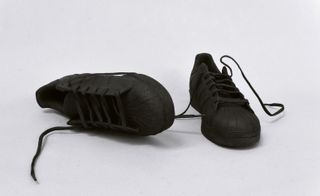
There are no reproductions of the actual art here. Instead the labels take on the shape and form and material quality of art; they are made in marble, they are paint on canvas and metal, charcoal on paper. Pictured: Superstars, 2015

‘Self-Portraits’ is a sly dig at the 'system' of gallery art; the explanatory tag becomes the art because we only know anything as ‘art’ because the tag tells us it is. Pictured: installation shot
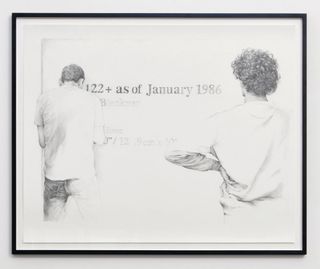
The show might also be a glorious celebration of art. It might suggest that you can better, truly understand someone if you know what has moved them, what meant something at a particular time. Pictured: Self Portrait IN PROGRESS, 2015
INFORMATION
'Self-Portraits' is on view until 7 November
Courtesy the artists and Victoria Miro, London
ADDRESS
Victoria Miro Mayfair
14 St George Street
London, W1S 1FE
Wallpaper* Newsletter
Receive our daily digest of inspiration, escapism and design stories from around the world direct to your inbox
-
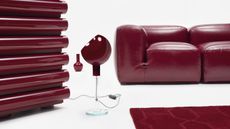 Gucci’s ‘Design Ancora’ reimagines furniture classics in rich red
Gucci’s ‘Design Ancora’ reimagines furniture classics in rich redGucci launches new editions of Italian design icons in an alluring deep red, showcased during Milan Design Week 2024
By Simon Mills Published
-
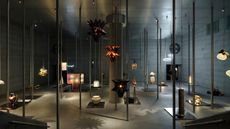 Loewe’s Jonathan Anderson drafts artists to create 24 extraordinary lamps at Milan Design Week 2024
Loewe’s Jonathan Anderson drafts artists to create 24 extraordinary lamps at Milan Design Week 2024Loewe creative director Jonathan Anderson commissioned international artists and artisans to explore ‘illumination within the house’ with a series of lamps and lighting installations, shown at a group exhibition at Milan Design Week 2024
By Scarlett Conlon Published
-
 What are polynucleotides? Trying the skin injectable made from salmon sperm
What are polynucleotides? Trying the skin injectable made from salmon spermPolynucleotides are the latest in skin injectables, containing DNA derived from the gonads of salmon. Wallpaper* Beauty & Grooming Editor Hannah Tindle tries them to discover exactly how they work
By Hannah Tindle Published
-
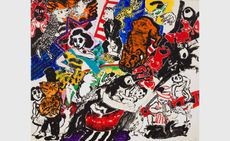 ‘Darker, more sinister themes’: Paula Rego’s decade of self-discovery is the subject of a new London exhibition
‘Darker, more sinister themes’: Paula Rego’s decade of self-discovery is the subject of a new London exhibitionPaula Rego’s ‘Letting Loose’, at Victoria Miro in London, considers the artist’s work from the 1980s
By Hannah Silver Published
-
 Alex Hartley’s eerie ode to Carlo Scarpa in Venice
Alex Hartley’s eerie ode to Carlo Scarpa in VeniceAlex Hartley’s theatrical new installation ‘Closer than Before’ at Victoria Miro Venice is a haunting take on architectural destruction in Venice
By Thea Hawlin Published
-
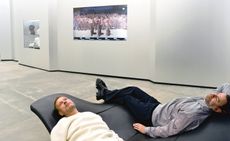 Elmgreen & Dragset in Milan: bodies, minimalism and home discomforts
Elmgreen & Dragset in Milan: bodies, minimalism and home discomfortsElmgreen & Dragset’s new show at Milan’s Fondazione Prada is an uncanny exploration of our dematerialising bodies and increasingly discomforting homes
By TF Chan Last updated
-
 Last chance to see: ‘Elmgreen & Dragset: The Nervous System’ at Pace New York
Last chance to see: ‘Elmgreen & Dragset: The Nervous System’ at Pace New YorkScandinavian artist duo Elmgreen & Dragset caution against short-term memory in their first major show with Pace Gallery, calling our attention to crises beyond the pandemic
By TF Chan Last updated
-
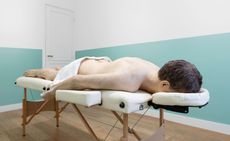 Laid bare: Elmgreen & Dragset create subversive massage parlour in Paris
Laid bare: Elmgreen & Dragset create subversive massage parlour in ParisIn Paris, Perrotin’s Matignon gallery is transformed into an uncanny massage parlour in the hands of artist duo Elmgreen & Dragset
By TF Chan Last updated
-
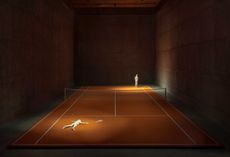 Life lessons from Elmgreen & Dragset’s tennis court
Life lessons from Elmgreen & Dragset’s tennis courtA new exhibition at Berlin’s König Galerie has the artist duo meditating on empty triumphs, power mechanisms and social divisions
By TF Chan Last updated
-
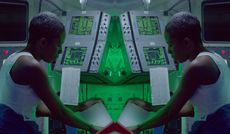 Stan Douglas’ riff on alternative realities has us seeing double
Stan Douglas’ riff on alternative realities has us seeing doubleCoinciding with the announcement that the Vancouver artist will represent Canada in the 2021 Venice Biennale, his galleries in New York and London are staging a dual survey of his ambitious video installation Doppelgänger
By Jessica Klingelfuss Last updated
-
 Singling out the solo booths to see at Frieze Los Angeles
Singling out the solo booths to see at Frieze Los AngelesOver 70 galleries will descend on Paramount Pictures Studio for the second edition of the West Coast art fair (14-16 February), anchored by an ambitious programme of special projects, film screenings, talks, and institutional collaborations
By Jessica Klingelfuss Last updated